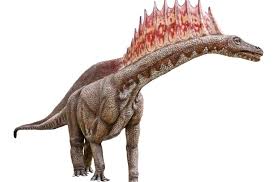Dinosaur spikes, the ancient rulers of our planet, continue to captivate our imagination with their colossal size and mysterious existence. In this exploration, we delve into the intriguing world of dinosaur spikes, those formidable structures that adorned the backs of these prehistoric beasts.
Read more about How to Choose the Right Vet for Your Pet
Contents
Unveiling the Purpose of Dinosaur Spikes
Dinosaur spikes, scientifically known as osteoderms or dermal scutes, were not merely decorative. They served a multitude of purposes crucial for the survival of these magnificent creatures. These bony protrusions varied in size and shape across different species, offering a unique signature to each dinosaur.
Protection Against Predators
One of the primary functions of dinosaur spikes was defense. Acting as a natural armor, these spikes provided a formidable deterrent against potential predators. Species like the Stegosaurus boasted rows of sharp, pointed spikes running down their backs, creating an imposing barrier to ward off attackers.
Regulating Body Temperature
Beyond defense, dinosaur spikes played a pivotal role in thermoregulation. Some researchers propose that these structures helped regulate the internal temperature of these cold-blooded giants. By absorbing or reflecting sunlight, spikes assisted in maintaining an optimal body temperature, especially in cooler environments.

Diversity in Dinosaur Spikes
The world of dinosaur spikes was incredibly diverse, showcasing a wide array of shapes, sizes, and arrangements. Let’s take a closer look at some of the most iconic examples:
Stegosaurus: Nature’s Spiked Defender
The Stegosaurus, a Jurassic herbivore, is renowned for its distinctive double row of large, kite-shaped plates along its back. Topped with formidable spikes, this dinosaur presented a formidable spectacle, combining both passive and active defense mechanisms.
Triceratops: Horned and Spiked Warrior
The Triceratops, a ceratopsian dinosaur, featured a striking trio of facial horns and a shield-like frill adorned with bony spikes. These adaptations not only served as weapons against predators but also played a role in intricate social behaviors and mating rituals.
Evolutionary Significance of Dinosaur Spikes
The evolution of dinosaur spikes unveils fascinating insights into the adaptation and survival strategies of these ancient creatures. The development of these structures was influenced by environmental factors, predator-prey dynamics, and the need for efficient thermoregulation.
Adaptation to Environmental Challenges
As dinosaurs diversified across various ecosystems, their spikes adapted to the challenges presented by their environments. From the dense forests to the arid plains, spikes evolved to suit the specific needs of each species, contributing to their resilience and dominance.
Conclusion
Dinosaur spikes were not mere embellishments but rather intricate adaptations that played a crucial role in the survival and success of these ancient giants. Their diverse forms and functions highlight the remarkable evolutionary journey that led to the dominance of dinosaurs in Earth’s prehistoric landscapes.
As we unravel the mysteries of these captivating creatures, the legacy of dinosaur spikes stands as a testament to the ingenuity of nature. From defense to thermoregulation, these bony structures were key players in the epic saga of the dinosaurs, a saga we continue to explore and admire today.




daniana votik